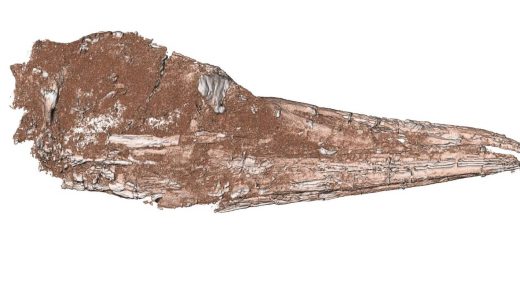
NEAR STE. GENEVIEVE — Twice a day, Joe Grande hops on his bicycle and pedals down to the wooded alcove near the entrance of his long driveway. He could walk, but cycling is the best way to “beat the mosquitoes.”
The clearing is surrounded by a lush stand of tall poplar, oak and birch trees. Atop handmade tables and inside purpose-built shade structures, another forest is thriving in miniature. The scene is intensely green.
Grande turns on the hose attached to his rainwater collection system and starts misting. Bonsai do best on a steady diet of neutral water; what comes from the tap contains too many chemicals and trace minerals for the tiny trees.

MIKE DEAL / WINNIPEG FREE PRESS
Joe Grande mists his bonsai trees with rain water; tap water contains too many chemicals and trace minerals.
He started training his first bonsai 33 years ago and moved out to the country a decade later, with the intention of building an outdoor workshop large enough to support the hobby.
With a collection nearing 200 trees, hobby hardly seems like the right word.
“Obsession?” he offers with a grin.
Previously, Grande and his wife lived in Wolseley, where he tended 40 or so bonsai in a small urban backyard. The couple moved east in search of more space for their respective passions — he trains trees, she trains obedience dogs.
Bonsai Winnipeg annual exhibit
Norwood Community Centre, 87 Walmer St.
Saturday, noon to 7 p.m.
Sunday, 10 a.m. to 4 p.m.
Free
Visit bonsaiwinnipeg.ca for more information
A Japanese artform, bonsai is the practice of curating miniature trees to look like realistic representations of their wild counterparts. It’s art imitating nature.
There are three stages within bonsai: development, balance and refinement. Grande’s collection is in various states of progress; the trees in development have been heavily pruned to encourage leaf and root growth, while those in balance are bound with wires directing branches into position.
Refinement is just what it sounds like — fussing with details and preparing the vignettes for display. In the final stage, water and fertilizer are often withheld to inhibit unplanned growth.
To the uninitiated, it can all seem quite violent. From Grande’s vantage, it’s an improvement from the forces acting upon a tree in the wild.
“There’s disease, insects, lightning, we chop them down for furniture and to build houses,” he says. “A bonsai tree in a pot, properly cared for, will outlive its natural lifespan.”

MIKE DEAL / WINNIPEG FREE PRESS
Grande points out a bud emerging on a portulacaria afra, or elephant bush.
Grande is soft-spoken with a calm demeanour — zen, if you will. His quiet devotion is expressed through a wealth of knowledge about the artform and each tree in his possession. Pick an individual and he can rattle off the genus as well as the date and location it was harvested.
Just don’t ask him to pick favourites. “How does a parent pick their favourite child?” he asks.
While describing the nuances of bonsai, he zig-zags across the yard, pointing out examples of different designs, settings and techniques. He doesn’t have a prized tree, but he does have preferences.
“Here, I’ll show you,” he says, when asked about his favourite style. “This is a literati bonsai and it’s characterized by a trunk that has little or no taper and a lot of undulating movement — it’s evocative of Chinese calligraphy.”

MIKE DEAL / WINNIPEG FREE PRESS
Copper wire helps set branches in the desired position.
The evergreen tree is about a metre tall, with little foliage and a thin trunk swooping into a dramatic curl. There are trees growing at extreme angles, cascading downward from their pots and being swept away by an invisible wind. A trio of tiny larch are clinging to a large, mossy rock, evoking the landscape of the Canadian Shield. Grande’s designs are based on established bonsai traditions and inspired by the chaos of nature. Some limbs and trunks are carved to look as if they’ve been broken or ravaged by rot.
“As an artist, you’ve got to be brave,” he says. “Be prepared to follow the guidelines, but break the rules.”
Larch is Grande’s favourite species to work with (just like the ones found in the northern boreal forest, the bonsai versions also turn gold in the fall), followed by Eastern cedar and potentilla, a compact, flowering shrub. It’s a common misconception that only certain kinds of trees, grown indoors, can be considered bonsai. Aside from the stipulation that they be grown in a shallow pot, virtually any plant can be turned into a pint-sized replica.
Save for a few tropicals, the bulk of Grande’s trees live outside year-round. He collects stunted greens and saplings from bogs and bushes around Manitoba. Since the species are native to the area, they’re well-equipped to handle the Prairie seasons.

MIKE DEAL / WINNIPEG FREE PRESS
Joe Grande has more than 200 bonsai trees in training on his property. Save for a few tropicals, the bulk of his trees live outside year-round.
Growing outdoors comes with its own set of challenges. Insects are a constant concern, and hungry deer and squirrels have destroyed a number of treetops.
“It sets me back four years every time they do that,” Grande says. “You grieve a lot in bonsai.”
That grief is one of the reasons he has so many trees. Having a large collection makes room for inevitable failures and allows for constant fiddling. Bonsai is a long game — trees need to be trained in position for years before they’ll yield to their stylized fate. Do too much too quickly and the tree might die.

MIKE DEAL / WINNIPEG FREE PRESS
‘You grieve a lot in bonsai,’ says Joe Grande of his painstaking hobby.
Grande, 75, is a semi-retired graphic designer. While the horticultural side of bonsai appeals to him — trees have been a part of his life since birth; his childhood home in Italy had a vast orchard — the dynamic artistry is what fuels the obsession.
“It’s just me, the tree and Mother Nature,” he says. “I saw that as a relationship I could gravitate towards.”
In many ways bonsai is a solitary pursuit. However, like any niche interest, there’s a large community that’s cropped up around the practice.
In the centre of his black baseball cap, Grande wears a small golden pin. It’s a keepsake from one of the global expos he’s visited as an active member of Bonsai Clubs International. While his interest in the hobby was piqued in 1984 after watching The Karate Kid, it wasn’t until joining the local Bonsai Winnipeg club in ‘89 that he started cultivating the passion in earnest.
Club president Scott Samson has a similar come-to-bonsai story.
“Seeing Mr. Miyagi farting around with little tiny trees and culturing them was what gave me the bug way back in the day,” says Samson, who’s been working with bonsai for the last 15 years.

JESSICA LEE / WINNIPEG FREE PRESS
Scott Samson, president of Bonsai Winnipeg, prunes a tree at his North Kildonan home.
Today, he has 40 trees in training in the backyard of his North Kildonan home. In the beginning, he and his brother tried mucking about with greenery purchased from a nursery, but had little success until joining Bonsai Winnipeg.
“It’s quite an in-depth craft,” he says. “So, we decided to find out more about how to do this thing so we weren’t just torturing and killing little trees.”
Still, the learning curve was steep.
“For the first eight years, I had the reputation of having killed more trees than anybody in the history of our club,” Samson says with a laugh. “I’d take (a tree) home and wire every single branch, I’d cut off all the foliage and I’d repot it — you do that twice, and the tree’s not strong enough to live.”
He learned a lot about patience through trial and error, and through mentorship from other club members, including Grande.
Bonsai Winnipeg runs monthly meetings, weekend workshops and introductory courses for beginners. Every spring and fall, members are invited on a field trip to dig up native trees and this weekend, the club is hosting its annual show, which gives local practitioners the opportunity to display their trees and share the artform with the public.
Local interest in bonsai has exploded recently. The club has roughly 120 members at the moment, up from 30 a few years ago. Samson chalks the growth up to an enthusiastic board, effective outreach and the COVID-19 pandemic, which saw many people trying out new home-based activities.

JESSICA LEE / WINNIPEG FREE PRESS
Shannon Block is an avid gardener who joined the Bonsai Winnipeg club this year after taking the multi-weekend introductory course.
Shannon Block joined the club this year after taking part in the 20-hour, multi-weekend introduction-to-bonsai course.
“Oh my gosh, you learn a lot,” she says. “I’ve only just scratched the surface. There’s so much more to know, and I left excited to learn more and reconnect with people I met through the course.”
Block is an avid gardener who has a house full of plants and a yard full of flowers and vegetables on her half-acre property in West Saint Paul. Bonsai seemed like a fitting opportunity to flex her already very green thumbs.
At the end of the Bonsai Winnipeg course, she received two trees to take home and practise on. Block is happy to report that both have survived the season and she’s already added three more to her collection. The bonsai bug takes root quickly.
“It was hard for me not to want to do more to my tree,” she says. “And that’s what makes you want to go out and get another tree or another bush or other plants to start working on.”
Block is excited to have one of her trees on display during this weekend’s show at Norwood Community Centre. Samson will be exhibiting 10 of his trees, while Grande plans on loading 14 of his bonsai into his “tree transporter” — a silver Volkswagen van — and hauling them into Winnipeg.
The exhibit is a chance to share knowledge, celebrate gradual progress and connect with like-minded people.
“Everybody’s got something to tell you about what they did to their tree, or how they got into it, or what they hope for this tree in a couple of years,” Samson says. “It’s pretty exciting.”
Twitter: @evawasney



